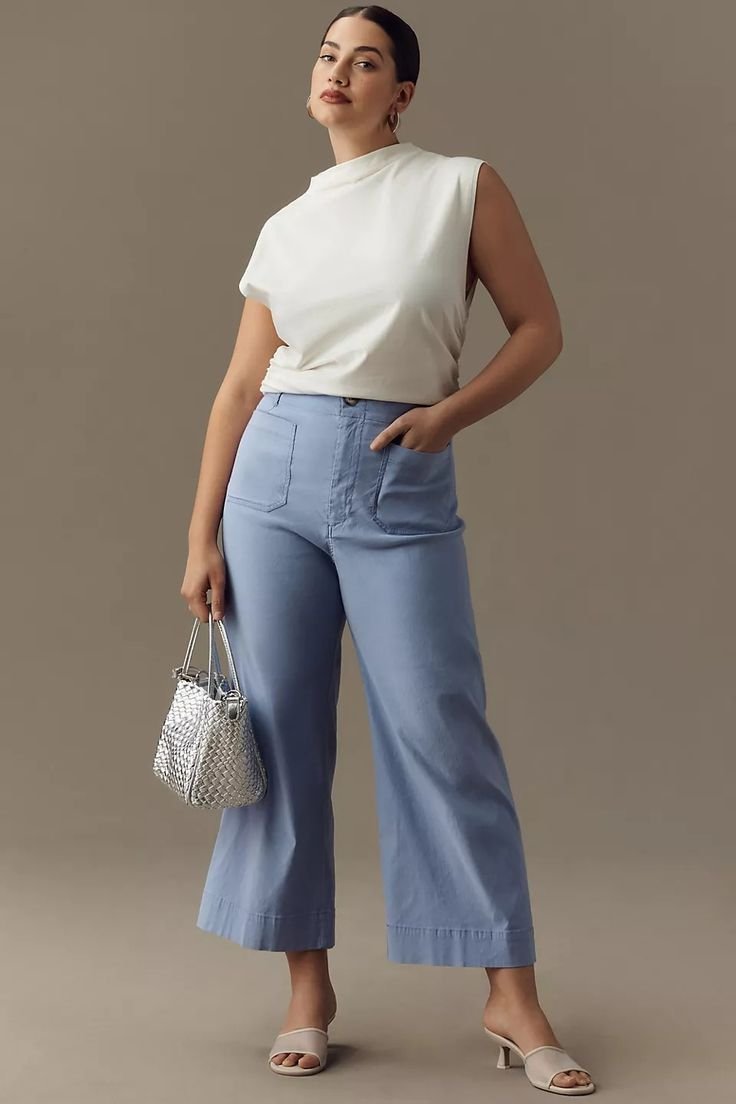The Proportion Playbook
Hi y’all! Today I’m sharing the concept of proportion in fashion, tips for achieving balanced looks, and providing a guide for different body types.
Fashion is not just about trends and colors; it’s also about proportions. Understanding how to balance proportions can elevate your style, making you look more polished and put-together. Mastering the art of proportion can help you create flattering, harmonious outfits that enhance your natural shape. Welcome to your ultimate Proportion Playbook!
Proportion in fashion refers to the relationship between different elements of an outfit, such as the length, width, and volume of the garments. Achieving the right balance can make an outfit look harmonious and flattering.
The length of tops, bottoms, and outerwear can significantly impact the overall look of an outfit.
Balancing fitted pieces with more voluminous ones helps create a visually appealing silhouette.
Different shapes can highlight or downplay certain areas of your body.
Tips to help you achieve balanced proportions in your outfits:
Pair a voluminous top with fitted bottoms and vice versa. For example, wear a flowy blouse with skinny jeans or a fitted top with wide-leg pants.
Adding a belt or wearing high-waisted bottoms can help define your waist and create an hourglass silhouette.
Experiment with different lengths of tops and bottoms. For instance, a cropped top can look great with high-waisted pants, while a tunic-length top pairs well with leggings.
Use layers to add depth and interest to your outfit. A long cardigan over a shorter top and jeans can create a balanced look.
The right shoes can also affect proportions. Heels can elongate your legs, while flats balance a taller frame.
Proportion Playbook for Different Body Types
Petite:
Opt for shorter tops and jackets to elongate your legs. High-waisted bottoms are also flattering.
Avoid overly voluminous pieces that can overwhelm your frame. Stick to more fitted silhouettes.
V-neck tops and A-line skirts can help create the illusion of height.
Tall:
Try longer tops and jackets to complement your height. Midi and maxi lengths can also be very flattering.
Play with volume by incorporating wide-leg pants or oversized sweaters.
Belted dresses and tops can help define your waist and add shape to your silhouette.
Curvy:
Tops that hit at the hip or just below can help balance your proportions. High-waisted skirts and pants are also flattering.
Balance fitted and voluminous pieces. A fitted top with an A-line skirt or wide-leg jeans can create a balanced look.
Wrap dresses and tops and tailored pieces can accentuate your curves flatteringly.
Athletic:
Try different lengths to add variety to your wardrobe. Cropped tops can be very flattering when paired with high-waisted bottoms.
Add volume to your silhouette with ruffled tops, peplum blouses, or pleated skirts.
Use belts to define your waist.
Proportion Tips for Different Outfits
Casual looks:
Tuck in your t-shirt or knot it at the waist to create a more defined silhouette. Pair with high-waisted jeans for balance.
Pair linen shorts with a tunic top. The shorts will peep out out the bottom, giving the outfit interest.
Workwear:
Choose a fitted blazer and pair it with wide-leg trousers. This combination creates a balanced look.
Accessories can also play a significant role in balancing proportion:
Use belts to define your waist and add structure to loose-fitting garments.
Statement necklaces or earrings can draw attention to your face, while long necklaces can elongate your torso.
Choose bags that complement your frame.
Use this Proportion Playbook as a guide to try new looks and the art of balanced dressing!
Thanks for reading!








